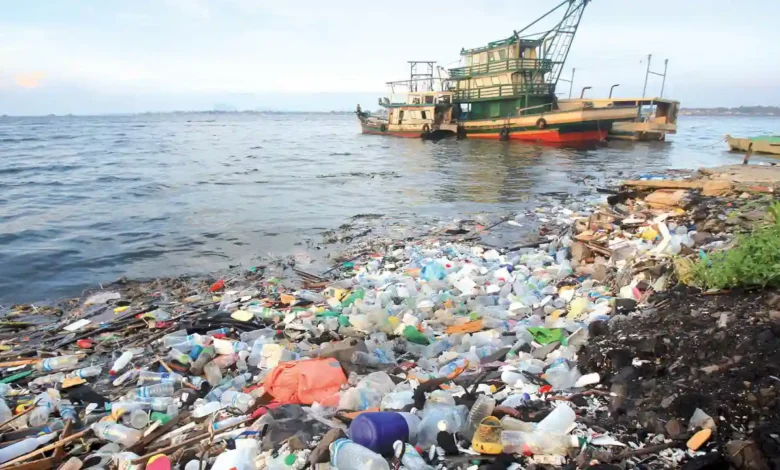Salvaging Environment Microplastics Pollution

Salvaging environment microplastics pollution is a critical challenge in today’s world, as microplastics are present all around us—in the water we drink, the air we breathe, our food packaging, and even the clothes we wear. On average, people ingest 5 grams of plastic per week, which equates to about 2,000 microplastic particles—essentially the equivalent of eating a credit card every week!
As a single individual, I cannot single-handedly address the scale of health and environmental hazards posed by plastic pollution. Nowadays, plastic is used in nearly everything, including personal hygiene products. It has become an urgent global threat, and salvaging environment microplastics pollution is the need of the hour.
Plastic debris is known to harm the environment. While debris can come in many shapes and sizes, microplastics are an even more subtle and unseen danger. These are small plastic particles, less than 5 mm in length, that result from plastic pollution. Due to their widespread use in daily life, they pose severe environmental and health risks. Salvaging environment microplastics pollution requires effective waste management and innovative solutions to control plastic contamination.
Leachate forms when rainwater filters through waste in landfills. Studies highlight that landfills contribute significantly to the disintegration of plastic items into microplastics due to various biochemical reactions. These reactions lead to temperature fluctuations, high salinity, low pH levels, and the generation of gases such as methane. According to research, the beaches of the Maldives have the highest concentration of plastic waste in the world. An estimated 280 million tons of plastic enter our oceans every year, making salvaging environment microplastics pollution an urgent environmental necessity.
Microplastics can enter the human body mainly through ingestion, inhalation, and dermal exposure. Primary microplastics are intentionally manufactured small, such as the exfoliating beads found in skincare products like scrubs and toothpaste. After entering the body, microplastics may accumulate in different tissues, potentially leading to severe health problems and immune system reactions. Secondary microplastics, on the other hand, are formed when larger plastic waste breaks down due to exposure to sunlight, water, soil, marine life, and atmospheric conditions. This highlights the importance of salvaging environment microplastics pollution to prevent further human exposure.
Read Also: Protecting the Integrity of Journalism and Education
Microplastic pollution has impacted nearly every aspect of human life. Human exposure occurs through ingestion, inhalation, and the consumption of contaminated products such as seafood, salt, sugar, honey, and bottled or tap water. Without realizing it, we consume microplastics every day. Poor plastic waste management exacerbates this issue, particularly in developing countries, where ineffective systems increase the risk of contamination in soil and water.
Microplastic pollution is not merely theoretical—it poses real dangers. In the oceans, microplastic particles are consumed by marine animals, which eventually enter the food chain. People who consume large amounts of seafood are at a higher risk of health complications. Coastal communities that rely on marine life for sustenance are particularly vulnerable to microplastic pollution. Plastics can take hundreds to thousands of years to decompose, wreaking havoc on ecosystems in the meantime. Even on beaches, microplastics are visible as tiny multi-colored fragments in the sand, highlighting the severity of the problem. This further emphasizes the need for salvaging environment microplastics pollution through strict regulations and sustainable alternatives.
One of the major contributors to microplastic exposure is plastic bottles. Studies have shown that bottled water contains microplastics in higher concentrations than tap water. When plastic bottles are squeezed, they develop white lines—indicating the release of microplastic particles. These particles infiltrate the stomach and immune system. There are countless other sources of microplastic contamination, many of which remain undiscovered.
To mitigate this crisis, the use of plastic must be significantly reduced or eliminated. Products such as toothpaste, scrubs, and personal care items containing microplastics should be avoided. Consumers can reduce microplastic consumption by reading product labels and opting for natural exfoliators like sugar and oats. Certain chemicals found in plastics—such as polyethylene (PE), polypropylene (PP), phthalates, bisphenol A (BPA), and polycyclic aromatic hydrocarbons (PAHs)—should be avoided as they can be absorbed by the human body and accumulate in vital organs, including the brain, blood, and even breast milk. A study published in the International Journal of Molecular Sciences suggests that these tiny particles may even induce behavioral changes.
Dissolvable coatings on laundry and dishwasher pods are also made of plastic, with about 75% of this plastic ending up in the environment—even after wastewater treatment. Japanese researchers recently discovered microplastics in clouds, raising concerns that these particles may be affecting the climate in ways that scientists still do not fully understand.
Alarmingly, scientists analyzing human testicles found microplastics in every single sample, raising concerns about their potential link to declining sperm counts in men. Furthermore, microplastic exposure has been increasingly associated with serious health conditions such as diabetes, infertility, cancer, obesity, metabolic disorders, bowel disease, and digestive tract issues. Microplastics may also cause inflammation, oxidative stress, respiratory problems such as asthma and fibrosis, and lung tissue damage. Over time, exposure to toxic plastic chemicals like BPA and phthalates may contribute to hormonal imbalances, endocrine disruption, reproductive disorders, cardiovascular diseases, and developmental problems in children.
Read Also: Parachinar Massacre, Sectarian Violence: A Stark Reminder of Injustice
To reduce microplastic pollution, we must eliminate or significantly limit the use of plastic bottles, bags, and packaging. Choosing reusable materials such as cloth bags, glass or metal containers, and natural fiber clothing can help reduce microplastic waste.
While filtration techniques such as reverse osmosis can reduce microplastics in drinking water, no filter can eliminate them completely. However, choosing filtered water over bottled water can lower exposure. Storing food in glass or metal containers instead of plastic and avoiding heating food in plastic containers can also help. Processed foods may contain microplastic contaminants from their packaging, so choosing unpackaged, microplastic-free products is advisable.
Reducing airborne microplastic exposure can be achieved by improving ventilation, regular dusting, and cleaning. Replacing plastic items with glass, wood, ceramic, or stainless steel whenever possible is another effective measure. Consuming sulfur-rich foods like cruciferous vegetables and antioxidant-rich berries may help mitigate microplastic-related health risks. Regular exercise, sweating (through activities like cardio, weight training, and sauna use), and using microfiber filters for laundry can further reduce microplastic contamination.
Governments must take action by enforcing bans on single-use plastics, improving waste management systems, regulating plastic additives, and promoting technological solutions to minimize exposure risks. Raising public awareness and encouraging consumers to make eco-conscious choices are crucial steps toward salvaging environment microplastics pollution and ensuring a sustainable future.
 Quraitulain Qureshi
Quraitulain Qureshi
Quraitulain Qureshi is a seasoned journalist and a dedicated CSS mentor. She combines her deep understanding of current affairs with a passion for guiding aspiring civil servants. You can reach her at 1995faded@gmail.com